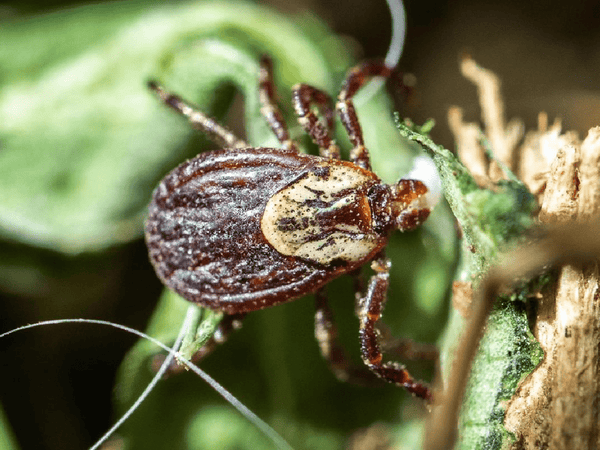Rocky Mountain Wood Tick

Name of Tick: Rocky Mountain wood tick
Danger Level: High
Nicknames: No other names for this tick
Scientific Name of Tick: Dermacentor andersoni
Habitat: The “Rocky Mountain” States of Montana, Idaho, Wyoming, Utah, Colorado, and New Mexico. Southwestern Canada.
Specific Habitat: Forests and wooded areas, locations with low growing plants, trails, the edges of trails and grasslands. The Rocky Mountain wood tick loves shrublands, population density is higher at lower elevations. Anywhere there is large amounts of loose wood, fallen trees, sticks and branches is a location particularly prone to infestation. Rocky Mountain wood tick distribution is not limited to woodlands, they can be found in urban areas, in backyards, and elsewhere.
Tick Facts and Information: The Rocky Mountain wood tick has three life stages, larvae, nymph, and adult. Rocky Mountain wood tick larvae hunt from spring through fall, they can remain attached and feeding for ten days or more. Rocky Mountain wood tick larvae can live an extended period without a blood meal, half a year or more. Once the larvae have found and fed on a host they will drop off and transform into nymphs. Rocky Mountain wood tick nymphs hunt spring through fall and are also able to stay alive without a meal for a long duration of time, a year or more. Nymphs can remain attached to a host for ten days or more, after feeding they drop off their victim and quickly transform into adults. Adult Rocky Mountain wood ticks hunt year-round and can survive for years without a blood meal, Rocky Mountain wood ticks are a sustained threat once they reach adulthood. Female adults can remain attached to a host for a scary duration, two weeks or more. A single female Rocky Mountain wood tick can lay up to 6000 eggs. A bite from the Rocky Mountain wood tick can trigger tick paralysis, a rare and devastating condition. The Rocky Mountain wood tick hunts by questing. A bite from the Rocky Mountain wood tick can cause debilitating disease and result in death.
Tick Color and Appearance: Adult males are brown or reddish brown with white markings, adult females are brown or reddish brown with a signature silver grey dorsal area
Size and Number of Legs: The average adult Rocky Mountain wood tick is 1/8 of an inch, size will vary greatly during the tick’s life cycle. Larvae have 6 legs, nymphs and adults have 8 legs.
Diseases Transmitted: Colorado tick fever virus, Rocky Mountain spotted fever, rickettsia, tick paralysis, tularemia
Control Solution: Tick Proof Repellent
Full Scientific Classification: Kingdom: Animalia, Phylum: Arthropoda, Class: Arachnida, Subclass: Acari, Superorder: Parasitiformes, Order: Ixodida, Family: Ixodidae, Genus: Dermacentor, Species: D. andersoni
